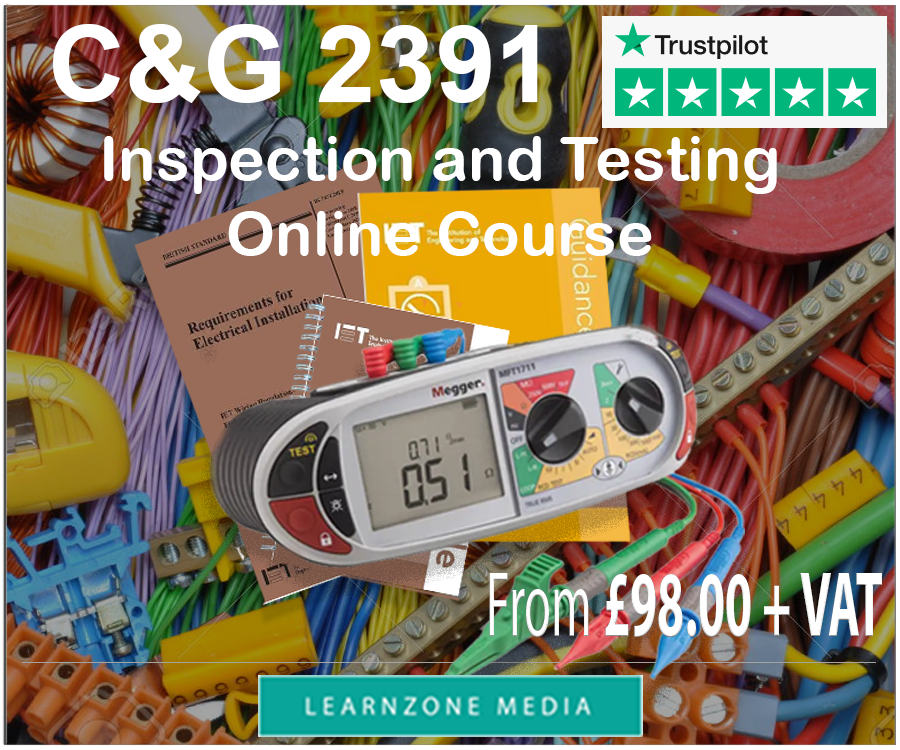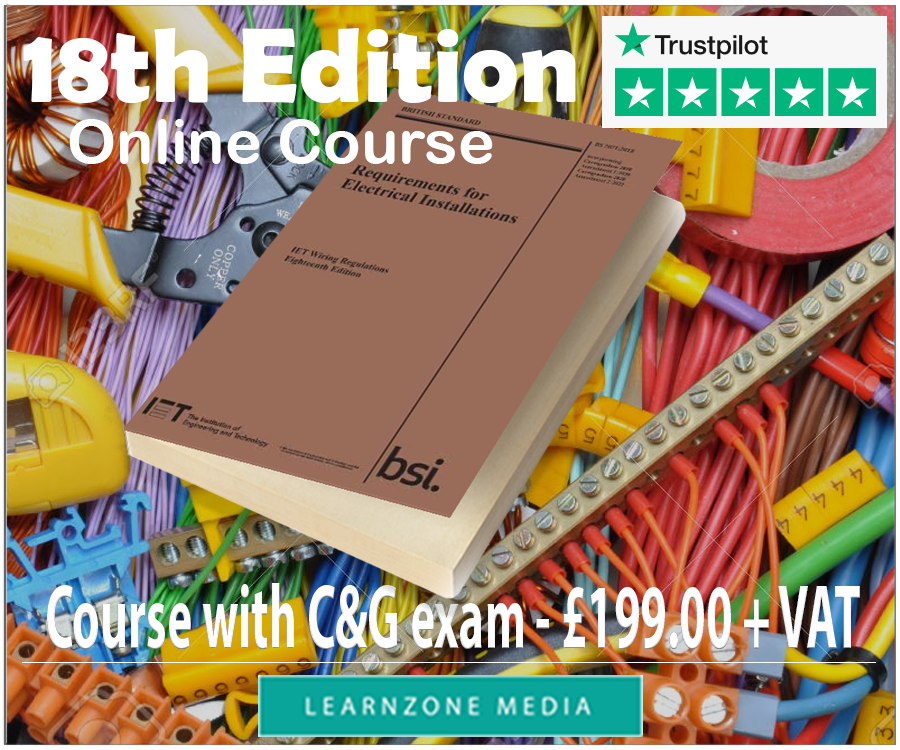C&G 2357 Unit 309 Questions With Answers
The C&G2357-309 forms part of the NVQ Level 3 Diploma in Electrotechnology.
It consists of a 30 question multiple-choice online exam to be completed in 60 minutes, and a 30 question written exam to be completed in 120 minutes.
These exams combine all of the science and principles behind electrical design and installation. The topics covered are as follows: mathematical principles, SI units, basic mechanics, resistance, resistivity, voltage, current and power, magnetism and electricity, electrical supply and distribution systems, effect on electrical circuits by different electrical properties, D.C. machines and A.C. motor, electrical components, electrical lighting systems, lighting calculations, electrical heating, electronic components.
These two exams, especially the written one, are considered to be the hardest exams of the whole qualification programme, since they are closed book exams.
The sample test bellow consists of 30 questions. Try to complete it without the aid of any materials and within 60 minutes.
1. If a charge of 10 Coulombs passes through a circuit every ½ second, how much current is flowing:
a) 5 Amperes
b) 20 Amperes
c) 5 Coulombs
d) 20 Coulombs
2. The SI unit of mass is called:
a) Kilogram
b) Newton
c) Tonne
d) Joule
3. If a room measured 12 m by 6 m, the floor area would be
a) 36 m2
b) 36 m3
c) 72 m2
d) 72 m3
4. Which of these statements is false:
a) the range resistor in a voltmeter is called a ‘multiplier’
b) the range resistor in an ammeter is called a ‘shunt’
c) to increase the range of an ammeter a resistor is placed in series with the
d) to alter the range of a voltmeter you place a resistor in series with the meter
5. A 20kg bag of sand falls from a scaffold. With what FORCE will it strike the ground?
a) 196.2kg
b) 196.2 N
c) 169.2N
d) 169.2kg
6. Current is described by the movement of free ..............s from one atom to another along the molecular structure of the conductor. What is the missing word?
a) higgs-bosun particles
b) electrons
c) neutrons
d) protons
7. What charge does a proton have?
a) positive
b) alternating
c) negative
d) neutral
8. The derived SI unit of measurement of velocity is
a) miles per hour
b) light-years
c) meters per hour
d) meters per second
9. What is the total resistance in the circuit where three resistors are in parallel to each other? R1 = 2 ohms and R2 = 4 ohms and R3 = 6 ohms.
a) 0.091ohms
b) 0.191ohms
c) 1.091ohms
d) 2.091ohms
10. Which one of the following materials has a 'negative temperature coefficient'?
a) carbon
b) iron
c) silver
d) copper
11. If resistance in a conductor INCREASES as temperature INCREASES, what term is used to describe this principle?
a) positive temperature coefficient
b) negative temperature coefficient
c) static temperature coefficient
d) inert temperature coefficient
12. Which material has the highest resistivity value from the following choices?
a) aluminium
b) silver
c) steel
d) copper
13. Inductive reactance is measured in
a) joules
b) ohms
c) henrys
d) watts
14. Which of the following makes use of the magnetic effect of an electric current:
a) an electric doorbell
b) a bimetal strip
c) a car battery
d) a storage heater
15. A component of a support system consisting of regularly spaced elements which secures a cable is defined as a cable…
a) cleat
b) tray.
c) basket tray
d) ladder





